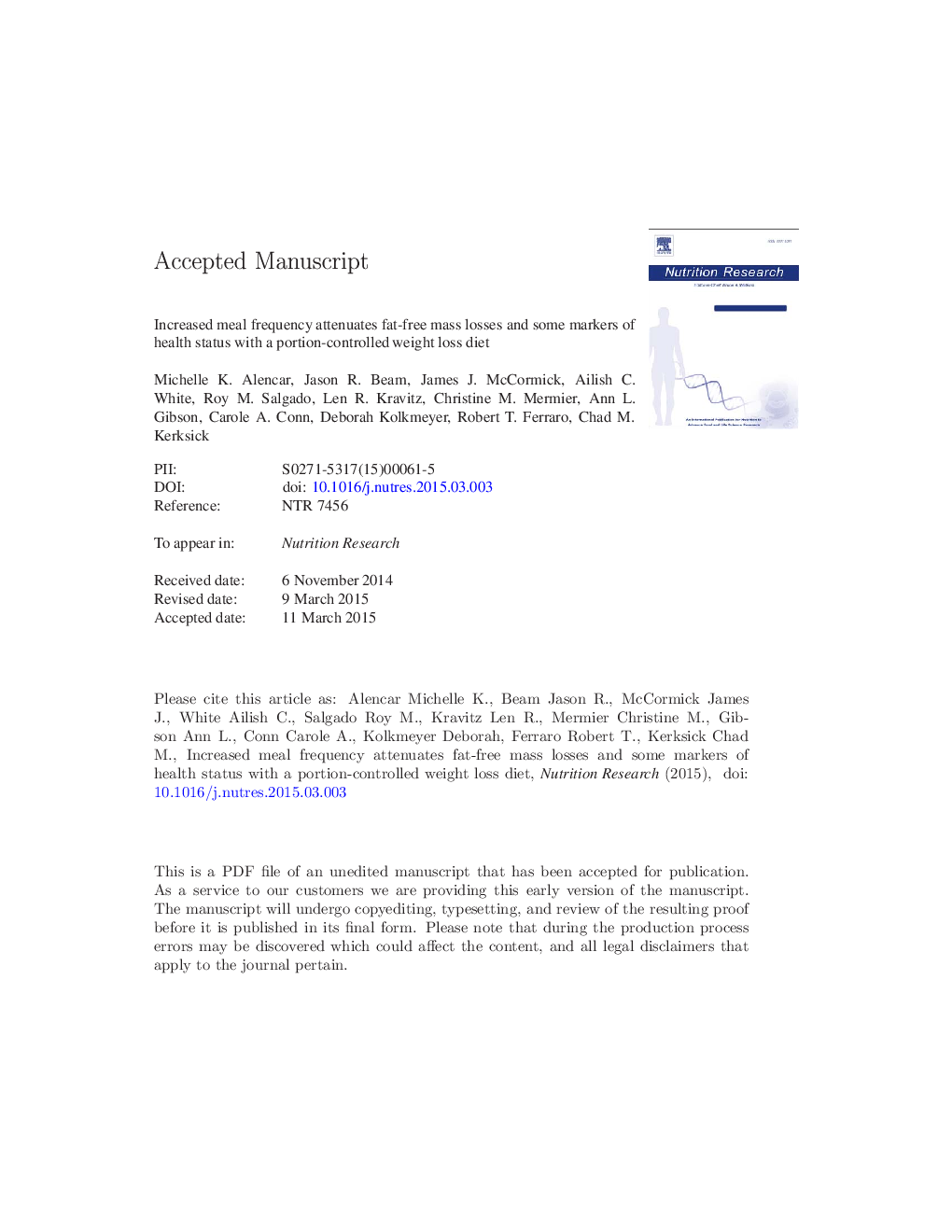| Article ID | Journal | Published Year | Pages | File Type |
|---|---|---|---|---|
| 5904393 | Nutrition Research | 2015 | 29 Pages |
Abstract
Increased meal frequency (MF) may be associated with improvements in blood markers of health and body composition during weight loss; however, this claim has not been validated. The purpose of the study was to determine if either a 2-meal (2MF) or 6-meal frequency (6MF) regimen can improve body composition and blood-based markers of health while consuming a portion-controlled equihypocaloric diet. Eleven (N = 11) obese women (52 ± 7 years, 101.7 ± 22.6 kg, 39.1 ± 7.6 kg/m2) were randomized into treatment condition (2MF or 6MF) for 2 weeks, completed a 2-week washout, and alternated treatment conditions. In pre/post fashion, changes in body composition, glucose, insulin, and lipid components were measured in response to a test meal. Body mass was successfully lost (P â¤Â .05) under both feeding regimens (2MF: â2.8 ± 1.5 vs 6MF: â1.9 ± 1.5 kg). Altering MF did not impact glucose, insulin, total cholesterol, or low-density lipoprotein cholesterol (P > .05). On average, fat-free mass (FFM) decreased by â3.3% ± 2.6% following the 2MF condition and, on average, increased by 1.2% ± 1.7% following the 6MF condition (P â¤Â .05). Fasting high-density lipoprotein cholesterol (HDL-C) percentage increased during the 2MF condition; this was significantly greater than that in the 6MF condition (1.3% ± 12.2% vs 0.12% ± 10.3%) (P â¤Â .05). Overall, reductions in MF (2MF) were associated with improved HDL-C levels; but the clinical significance is not clear. Alternatively, increased MF (6MF) did appear to favorably preserve FFM during weight loss. In conclusion, caloric restriction was effective in reducing body mass and attenuating FFM changes in body composition; however, glucose, insulin, and lipid metabolism had no significant differences between MF.
Keywords
BIARMRHDL-CLDL-CFFMAUCResting metabolic ratestandard deviationinsulincardiovascular diseasebioelectrical impedance analysisanalysis of varianceANOVAtriglyceridefat-free massLean body massfat massPercentage body fatCVDbody mass indexBMIEating frequencyMeal frequencyhigh-density lipoprotein cholesterolObesityarea under the curveWashoutbody weight%BFLow-density lipoprotein cholesterolGlucose
Related Topics
Life Sciences
Biochemistry, Genetics and Molecular Biology
Endocrinology
Authors
Michelle K. Alencar, Jason R. Beam, James J. McCormick, Ailish C. White, Roy M. Salgado, Len R. Kravitz, Christine M. Mermier, Ann L. Gibson, Carole A. Conn, Deborah Kolkmeyer, Robert T. Ferraro, Chad M. Kerksick,
